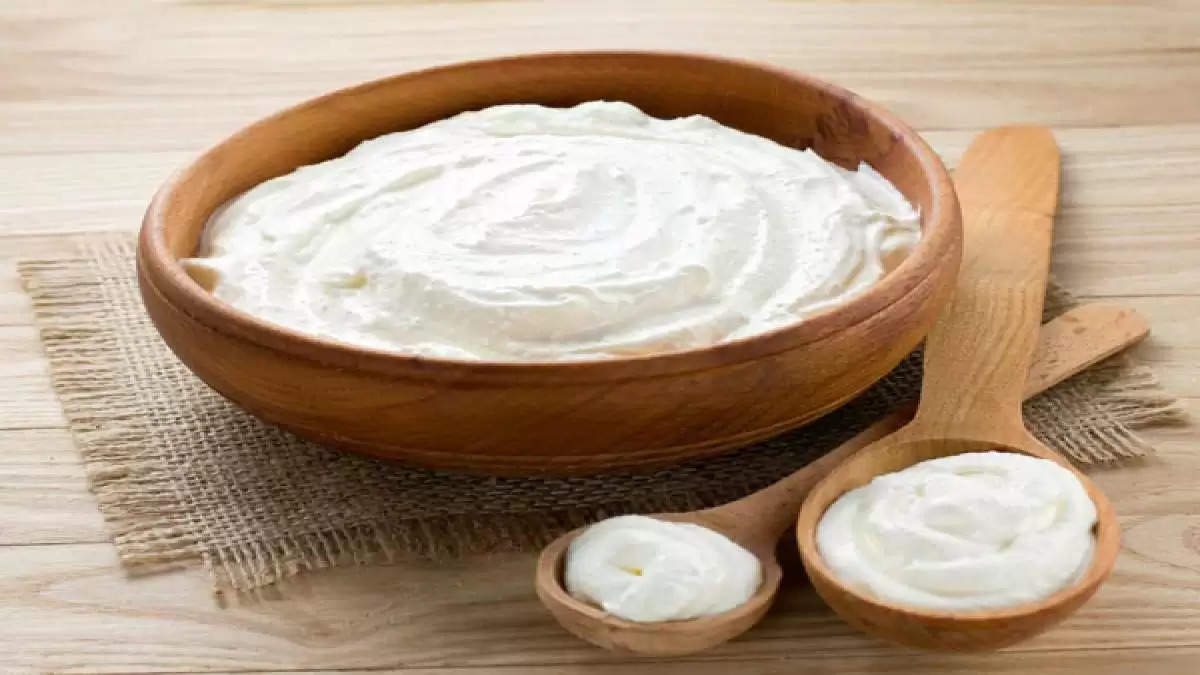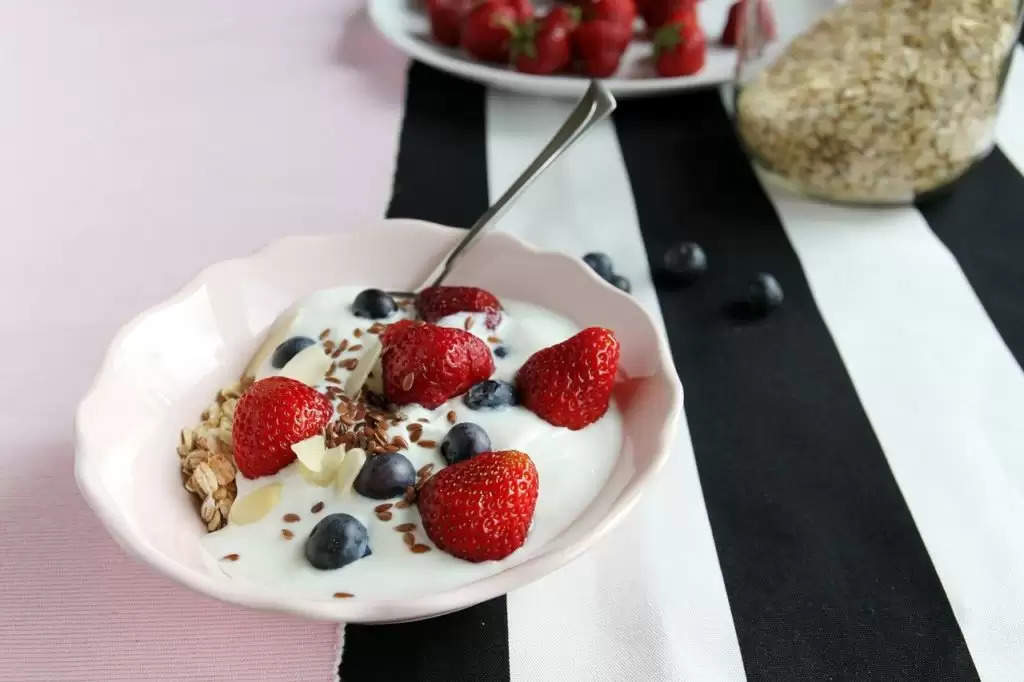What are the nutritional facts of curd and how many calories does it contain?

Knowing the calorie count of curd is highly important as it is an essential part of the Indian diet, commonly served with various meals at home or restaurants. With its appealing taste and easy digestibility, curd is widely accepted by people of all ages and is known to have probiotic benefits that aid in alleviating stomach ailments such as diarrhea and lack of appetite.
With the availability of numerous curd varieties in the market, the calorie count of curd depends largely on its sugar and fat content, hence low-fat or fat-free curd has a different calorie count than that of whole milk curd. This article will delve into curd calories, its nutritional content, benefits, and side effects.
Curd Calories – How Many Calories Does Curd Have?
Are you aware of the calorie content in curd? It might surprise you to know that a cup or 128 grams of fat-free curd contains 100 calories, which is more than the calorie count of 90 in milk. However, curd is a good source of protein, containing 11 grams per serving, while milk contains 9 grams.
- A cup of homemade curd using cow's milk contains 142 calories, while 100 grams of unflavored, whole milk curd has 61 calories.
- The calorie content of curd depends on the type of milk used for curdling, with full-fat milk resulting in a higher calorie count

Nutritional Content Of Curd
1. Protein
Curd is not only high in calories, but it also contains a protein content of approximately 10-12 grams depending on the type. Commercially sold curd may have a higher protein content due to the addition of dry milk during processing, either using whey or casein depending on its solubility in water. The protein in curd is largely made up of alpha-casein, which accounts for around 80% of the protein and contributes to its white appearance. This type of protein is also beneficial for mineral absorption and can improve low blood pressure. Curd also contains 20% whey protein, high in BCAAs such as valine, leucine, and isoleucine, which aids in weight loss and maintaining blood pressure.
2. Carbohydrates
Curd is rich in lactose and galactose, which are simple sugars broken down by bacteria during fermentation to produce lactic acid responsible for its sour taste. With fewer carbohydrates than milk, curd is an excellent food choice for those on a keto diet, with only three percent of its calorific value derived from carbohydrates. However, sweet and flavored yogurts containing sucrose and fruit flavors have a high sugar content ranging from 4.7 to 18.6%, which may not be healthy when consumed regularly.
3. Water
Curd is composed of approximately 80% water, which makes it a popular choice for consumption during the summer season when the risk of dehydration is high. Drinking a glass of buttermilk or lassi can provide an immediate energy boost and help with rehydration.
4. Vitamins
The vitamin levels found in yogurt are influenced by the milk used to create the curd, as well as the specific bacteria involved in the fermentation process. Whole milk is generally considered to be a beneficial source of vitamins.
- Vitamin B12 Curd is a significant source of vitamin B12, which is essential for maintaining healthy nerves and blood cells in our body. Vitamin B12 is typically present in fish, meat, and poultry, making curd an important dietary component, particularly for vegetarians. Its consumption helps prevent megaloblastic anemia.
- Vitamin A Curd has a 2% content of Vitamin A, an essential nutrient that plays a vital role in facilitating cellular communication, supporting vision and reproduction, and enhancing the immune system.
- Vitamin C Our parents often suggest applying curd on the face for a better glow and on the scalp to strengthen and add shine to hair strands. This is because curd is rich in Vitamin C, which is known to promote collagen formation and enhance the immune system.
5. Minerals One of the two significant mineral groups in curd is potassium, which plays a crucial role in various bodily functions. Potassium facilitates proper nervous system function and muscle contraction, aids in nutrient transportation into cells, and removes toxins from cells.
- Calcium Curd is a valuable source of easily absorbable calcium, a nutrient necessary for building strong bones and teeth. Additionally, calcium plays a crucial role in blood clotting and muscle contraction.
- Potassium One of the two significant mineral groups in curd is potassium, which plays a crucial role in various bodily functions. Potassium facilitates proper nervous system function and muscle contraction, aids in nutrient transportation into cells, and removes toxins from cells.
- Zinc Zinc is an essential mineral that our body cannot produce on its own. While curd only contains a small amount of zinc, it can still provide benefits such as improving the immune system, aiding in DNA synthesis, and supporting growth.
- Phosphorus The body benefits from the phosphorus present in curd, which aids in various biological processes such as cellular growth, repair, and maintenance.
6. Riboflavin
Riboflavin is a crucial nutrient found in high amounts in curd. It plays an essential role in converting carbohydrates, fats, and proteins into energy and supports growth and overall health.
7. Probiotics
Probiotics, which consist of live good bacteria such as lactic acid and bifidobacteria, provide several health benefits such as aiding in digestion, managing stomach issues, reducing cholesterol levels, improving lactose digestion, and managing diarrhea.
When selecting yogurt or dahi, it is important to choose the one with active and live cultures. Lactobacillus bulgaricus and Streptococcus thermophilus are the main bacterial cultures that help ferment the curd. Probiotic curds might include additional bacterial cultures for probiotic purposes.
8. Lactic Acid Lactic acid is a key component of curd, formed when milk is curdled using acidic elements. The presence of two types of bacteria, lactobacillus bulgaricus and Streptococcus thermophilus, breaks down the fats and proteins in milk. This curdling process converts the lactose in milk into lactic acid, which is easier to digest.
9. Monosaturated Fatty Acids Curd contains three primary types of monounsaturated fatty acids - oleic acid, stearic acid, and palmitic acid. These fats make curd a nutritious food suitable for individuals of all ages, from children to the elderly.

How To Make Curd At Home?
Homemade curd is a beloved staple of many Indian households due to its nutritious calorie content, as well as its fresh and delicious taste. To ensure proper curd formation, it's important to follow the correct steps when preparing it at home. Consider the following points when setting curd in your own kitchen.
Ingredients Required
- 2 cups of milk
- 1 tsp curd
Preparation Method
To prepare homemade curd, begin by boiling the milk and allowing it to cool for some time. In a separate bowl, whisk the curd and add the warm milk, stirring thoroughly. Take care not to use milk that is too hot, as this could prevent the curd from setting properly. Cover the mixture and let it sit undisturbed for 5-6 hours. If the weather is chilly, the curd may take up to 10-12 hours to set. During colder months, it's recommended to keep the curd in a warm, dark place, such as an oven or casserole. For more detailed instructions on setting curd at home, please refer to additional resources.
Things To Remember While Setting Homemade Curd
To set curd properly, it's important to follow these steps:
- Avoid boiling the milk.
- Wait for the milk to cool down before adding starter milk.
- Add the appropriate amount of curd to the milk.
- In colder weather, cover the curd-containing bowl with a kitchen towel to aid in setting.
- If setting curd in the winter, provide warmth to the bowl to promote proper curd formation.
Benefits Of Curd
- Helps In Improving Digestion
- Helps In Maintaining Blood Pressure
- Promotes Bone Health
- Aids In Weight loss
- Helps In Constipation
- Helps To Build Strong Immunity
Curd Side Effects
1. Lactose Intolerance
2. Milk Allergy
3. Added Sugar



